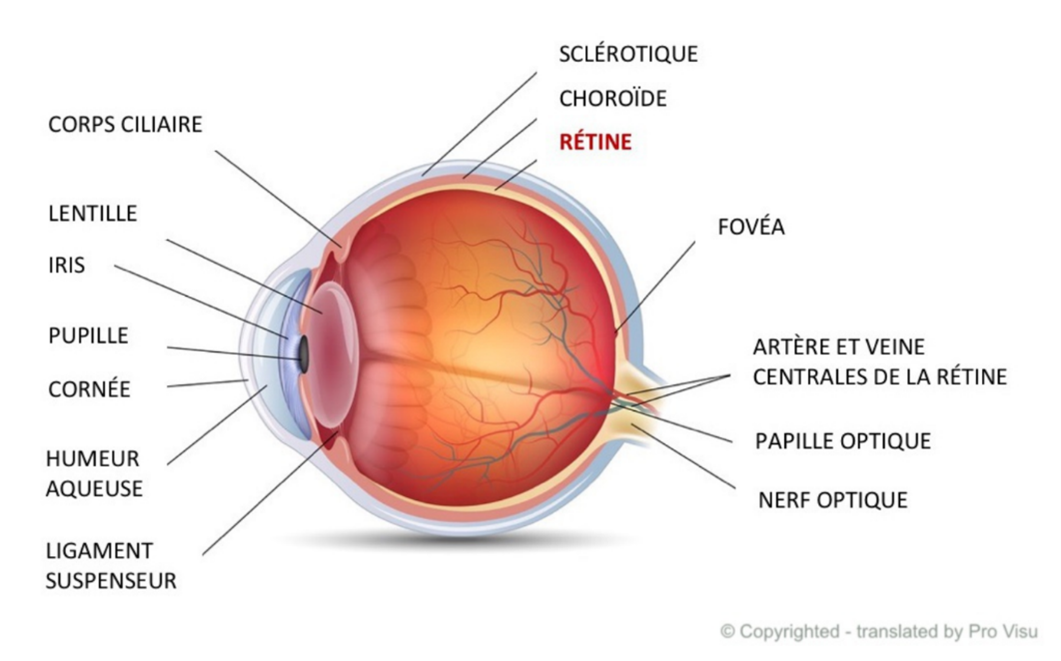Diseases
Retinosis pigmentaria

Definition
Retinitis pigmentosa is a genetic disease that affects the retina in both eyes and can lead to blindness. In most cases, it develops in childhood or adolescence, although it can sometimes be diagnosed in adults. Its course is not predictable: it can remain stable or deteriorate gradually, continuously or rapidly.
Causes
A mutation in a gene coding for retinal proteins appears to be the cause of retinitis pigmentosa. Several dozen genes have been identified, and when one of them is abnormal, dysfunction of the photoreceptors (the cells in the retina that pick up light signals) occurs. The disease can be transmitted by the parents (50% of cases) or by a new mutation, called a sporadic mutation (50% of cases).
Symptoms
The most common symptoms are a loss of night and peripheral vision (known as tunnel vision, because the visual field is narrowed). As the disease progresses, other symptoms may appear, such as difficulty distinguishing colours and the appearance of light phenomena described as flickering. Finally, in severe cases, central vision is also eventually affected and blindness may occur.
Other signs may also appear at the back of the eye. The most common is hyperpigmentation in the mid-peripheral retina, but there are others, such as narrowing of the retinal arterioles, a waxy yellow pupil, cystoid macular oedema, posterior subcapsular cataract or myopia, and sometimes even the presence of cells in the vitreous body.
Diagnosis
When any of the signs suggestive of retinitis pigmentosa appear, the diagnosis should be raised and confirmed using a variety of tests:
Examination of the back of the eye
Examination of the visual field
Electroretinogram (ERG)
Genetic analysis provides definitive confirmation of the ophthalmological diagnosis and is also recommended for all family members to establish the mode of transmission.
Treatments
There is no recognised treatment to cure retinitis pigmentosa or slow its progression, but research is very active in locating the genes responsible in order to understand the mechanisms involved in the development of the disease and then improve its management. Numerous clinical trials are currently being carried out on various treatments, and the therapeutic avenues are centred on :
Gene therapy (for certain genetic mutations, gene therapy makes it possible to introduce copies of healthy genes into the retina to replace the faulty instructions of the abnormal gene).
Stem cells
Retinal implants
Retinal cell transplants to restore visual function
Pharmacological treatments
Frequency
Retinitis pigmentosa affects 1 in 5,000 people worldwide.
Prevention
As retinitis pigmentosa is a genetic visual disease, there is no way of preventing it.
References
Rétinite pigmentaire - Hôpital ophtalmique Jules-Gonin
Rétinite pigmentaire - Troubles oculaires - Édition professionnelle du Manuel MSD (msdmanuals.com)

